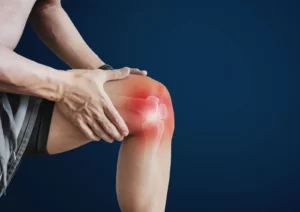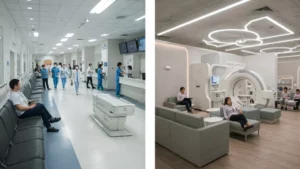Technological advancements continue to redefine the landscape of diagnostics. Among these innovations, low-dose CT scans remain to be an effective tool for detecting abnormalities with reduced radiation exposure.
If you’re considering or scheduled for a low-dose CT scan, a common question likely echoes in your mind: How long does it take?
Find out what it offers for timely and accurate health assessments.
What Is The Importance Of Knowing The Duration Of The Scan?
Knowing how long the procedure takes provides better preparation and a smoother experience.
Here are five reasons why the duration of a low-dose CT scan matters:
- Patient Convenience: Knowing the estimated time allows patients to plan their day more effectively, reducing potential stress and anxiety associated with the unknown duration.
- Workflow Efficiency: Medical facilities can optimize their workflow, so that there are timely appointments and minimizing patient waiting times.
- Resource Allocation: Hospitals and clinics can manage resources more efficiently by understanding the time required for each scan. This allows for a streamlined and effective healthcare delivery system.
- Improved Patient Experience: Transparent communication about the duration fosters trust between healthcare providers and patients. Thus, there is overall positive experience for the patient.
- Diagnostic Accuracy: Precise knowledge of the scan duration aids in coordinating additional tests or appointments. This results to a more comprehensive and accurate diagnostic process.
What is a Low-Dose CT Scan Used For?
A low-dose CT scan, short for computed tomography, is a medical imaging technique that utilizes X-rays to create detailed cross-sectional images of the body. This non-invasive procedure is widely employed for various diagnostic purposes, primarily aimed at detecting and monitoring conditions within the body.
Low-dose CT scans are commonly used for:
- Cancer Screening: Detecting early signs of lung, liver, and other cancers.
- Cardiac Imaging: Assessing the health and function of the heart and blood vessels.
- Pulmonary Evaluation: Examining the lungs for conditions like pneumonia or pulmonary embolism.
- Trauma Assessment: Quickly evaluating injuries after accidents or traumas.
- Abdominal and Pelvic Studies: Diagnosing issues in the digestive and reproductive systems.

How Long Does a Low-Dose CT Scan Take?
The duration of a low-dose CT scan can vary depending on factors such as the specific area being examined and the technology used.
Generally, these scans are known for their efficiency, often taking anywhere from 10 to 30 minutes.
The quick turnaround not only minimizes the time patients spend in the imaging suite but also facilitates a prompt diagnostic process, which is crucial for timely medical interventions.
Factors that May Affect the Duration of the Scan
The duration of a low-dose CT scan is influenced by various factors, making it essential for patients to be aware of potential variables that could impact the time spent in the imaging suite.
Here are four key factors that may affect the duration of a low-dose CT scan:
- Type of Scan: Different types of low-dose CT scans may have varying durations based on the complexity and depth of the imaging required.
- Body Part Examined: The area of the body being examined plays a significant role; scans focusing on larger or more intricate regions may take longer.
- Patient Cooperation: The ability of the patient to remain still during the scan is crucial; any movement may necessitate a repeat, potentially prolonging the procedure.
- Technological Advances: State-of-the-art CT machines equipped with advanced technology may offer faster scan times compared to older models.
What to Expect During a Low-Dose CT Scan:
This non-invasive procedure is generally straightforward, but being aware of the process enhances patient preparedness.
Here are six aspects to anticipate during a low-dose CT scan:
- Preparation: Minimal preparation is required, typically involving the removal of metal objects and the wearing of a gown.
- Positioning: Patients will be positioned on the CT table, and it’s crucial to remain still during the scanning process.
- Contrast Agent (if used): In some cases, a contrast dye may be administered intravenously to enhance the visibility of certain structures.
- Machine Noise: The CT machine may produce clicking or whirring sounds during the scan, which is normal and part of the imaging process.
- Communication: Technologists will guide patients throughout the procedure, providing instructions and ensuring comfort.
- Quick Duration: Low-dose CT scans are known for their rapid imaging capabilities, typically lasting between 10 to 30 minutes, depending on various factors.H2: Benefits of a low-dose CT scan

Benefits of a Low-Dose CT Scan
From minimizing radiation exposure to enabling early detection and providing swift, non-invasive imaging, these scans play a pivotal role in enhancing healthcare outcomes.
Reduced Radiation Exposure
One of the significant advantages of CT chest low dose scans is the reduced radiation exposure compared to traditional CT scans.
This makes them safer for patients, particularly for those requiring regular imaging or individuals more susceptible to the harmful effects of ionizing radiation. The utilization of lower radiation doses underscores the commitment to patient safety while maintaining diagnostic accuracy.
Early Detection of Lung Cancer
Low-dose CT scans excel in the early detection of lung cancer, particularly in high-risk individuals such as smokers or those with a family history of the disease.
By capturing detailed images of the lungs, these scans enable healthcare professionals to identify potential abnormalities at their nascent stages, facilitating timely intervention and significantly improving the chances of successful treatment.
Non-invasive and Quick
The non-invasive nature of low dose chest CT scan offers patients a more comfortable experience compared to invasive diagnostic procedures.
Additionally, the quick turnaround time, often ranging from 10 to 30 minutes, contributes to the efficiency of the diagnostic process. This swift imaging capability is particularly advantageous for patients and healthcare providers alike, allowing for prompt assessments and subsequent actions.
Advanced Imaging
CT lung screening low dose leverages advanced imaging technology to provide detailed cross-sectional views of the body.
The high-resolution images aid in accurate diagnosis and treatment planning for various medical conditions. This technological advancement enhances the precision and reliability of the information gathered during the scanning process, contributing to improved healthcare outcomes.
Help in Identifying Other Diseases
Beyond their primary focus, low dose lung CT scan can also play a role in identifying other diseases or conditions affecting different organs and structures within the body. This versatility makes these scans a valuable diagnostic tool for comprehensive health assessments, enabling healthcare professionals to detect a range of medical issues beyond the initially targeted area.

Low-Dose CT Scan Vs. Regular CT Scan
As the field of medical imaging evolves, the comparison between low-dose CT scans and regular CT scans becomes crucial for patients seeking diagnostic procedures. Understanding the differences between these two approaches sheds light on their respective advantages and implications for healthcare.
Radiation Exposure
- Low-Dose CT Scan: Employs significantly lower radiation doses, prioritizing patient safety.
- Regular CT Scan: Involves higher radiation doses, potentially increasing the risk, especially with repeated scans.
Diagnostic Accuracy
- Low-Dose CT Scan: Maintains diagnostic precision while minimizing radiation exposure.
- Regular CT Scan: Offers detailed imaging but with a higher radiation dose, often reserved for specific cases requiring more extensive information.
Patient Comfort
- Low-Dose CT Scan: The CT chest low dose screening is non-invasive and quick, providing a more comfortable experience for patients.
- Regular CT Scan: This may be more time-consuming and occasionally involve invasive procedures, impacting patient comfort.
Clinical Applications
- Low-Dose CT Scan: Commonly used for routine screenings and monitoring, especially in high-risk populations.
- Regular CT Scan: Typically employed for more complex diagnostic scenarios where detailed imaging is imperative.
Cost and Resource Utilization
- Low-Dose CT Scan: Generally more cost-effective due to quicker procedures and reduced radiation exposure.
- Regular CT Scan: This can be more resource-intensive, both in terms of time and cost, depending on the complexity of the imaging required.
Get Accurate Diagnosis With Reliable Scans
The choice between low-dose CT scans and regular CT scans hinges on various factors, including the nature of the medical condition, the required diagnostic precision, and concerns about radiation exposure.
While regular CT scans remain indispensable in certain scenarios, CT low dose lung screening offers a compelling alternative with enhanced safety and efficiency, especially for routine screenings and early disease detection.
Our state-of-the-art facilities at One Step Diagnostic prioritize patient well-being, providing accurate and swift imaging with reduced radiation exposure. We’ll also provide you with the right information on how long does a low-dose CT scan take and all the things you need to expect.
Take the next step towards proactive healthcare – choose One Step Diagnostic for comprehensive and patient-centered diagnostic services.
Contact us today to schedule your low-dose CT scan and embrace a new era in diagnostic excellence.




